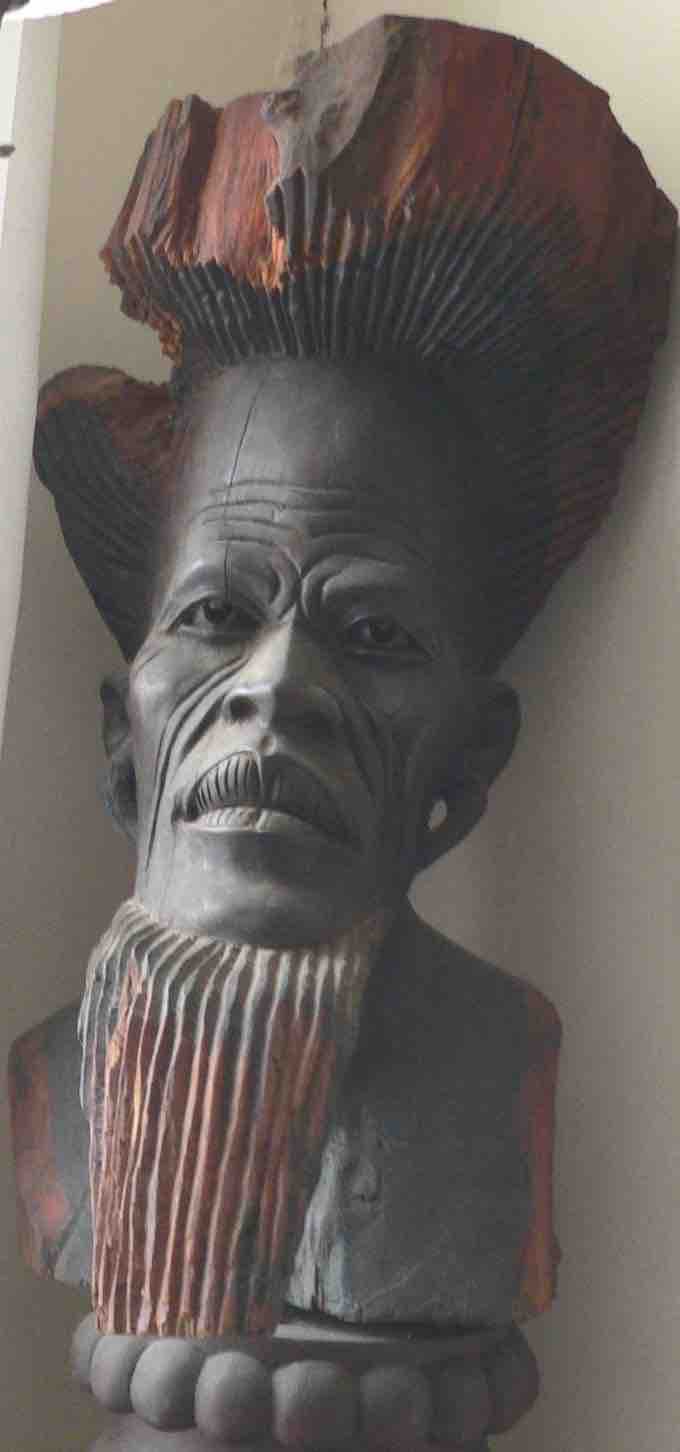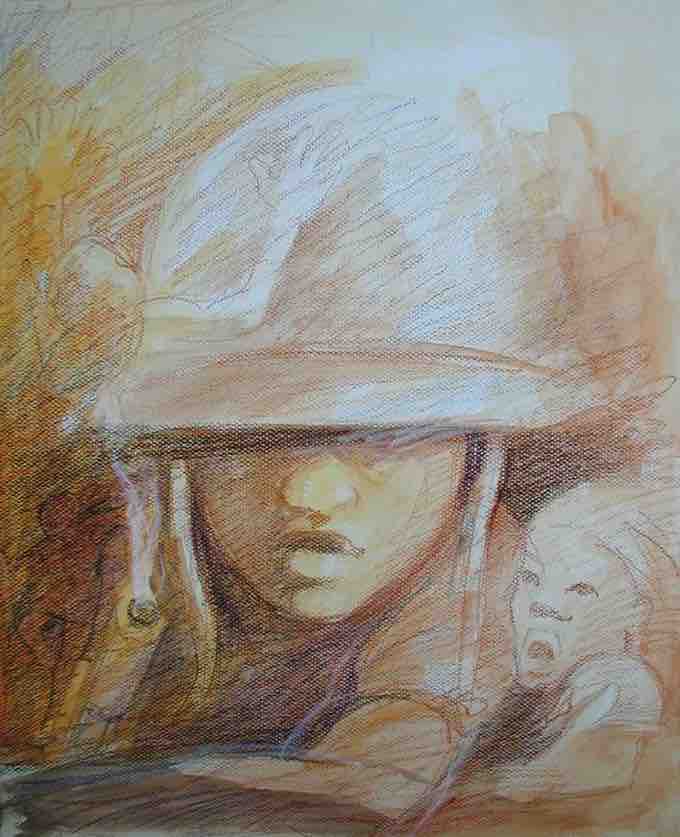Overview
The countries throughout Africa are home to many thriving contemporary arts cultures. This has been unfortunately understudied until recently, due to scholars' and art collectors' emphasis on traditional art from the region. Notable modern artists include El Anatsui, Marlene Dumas, William Kentridge, Karel Nel, Kendell Geers, Yinka Shonibare, Zerihun Yetmgeta, Odhiambo Siangla, Olu Oguibe, Lubaina Himid, Bili Bidjocka, and Henry Tayali. Art biennials are held in Dakar, Senegal, and Johannesburg, South Africa. Many contemporary African artists are represented in museum collections, and their art may sell for high prices at art auctions; however, other artists have difficult times finding a market for their work.
Development of Contemporary Art
Many contemporary African arts borrow heavily from traditional predecessors. Ironically, their emphasis on abstraction is seen by Westerners as an imitation of European and American cubist and totemic artists, such as Pablo Picasso, Amedeo Modigliani, and Henri Matisse, who, in the early 20th century, were heavily influenced by traditional African art. This period was critical to the evolution of Western modernism in visual arts, symbolized by Picasso's breakthrough painting "Les Demoiselles d'Avignon".

Wood sculpture attributed to Zimbabwean artist Gideon Chidongo, late 20th century
Wood carving has a long history in Zimbabwe, and this contemporary art piece takes from this tradition.
Contemporary African art was pioneered in the 1950s and 1960s in South Africa by artists like Irma Stern, Cyril Fradan, and Walter Battiss and through galleries such as the Goodman Gallery in Johannesburg. More recently, European galleries such as the October Gallery in London and collectors such as Jean Pigozzi, Artur Walther, and Gianni Baiocchi in Rome have helped expand the interest in the subject. Numerous exhibitions at the Museum for African Art in New York and the African Pavilion at the 2007 Venice Biennale, which showcased the Sindika Dokolo African Collection of Contemporary Art, have gone a long way to countering many of the myths and prejudices that haunt contemporary African art. When Okwui Enwezor from Nigeria was appointed as artistic director of the international exhibition Documenta 11, his African-centered vision of art propelled the careers of countless African artists onto the international stage.
A wide range of more traditional forms of art, or adaptations of traditional style to contemporary taste, are made for sale to tourists and others, including so-called "airport art." A number of vigorous popular traditions assimilate Western influences into African styles, such as the elaborate fantasy coffins in shapes such as airplanes, cars, or animals of West African cities and the banners of clubs.
Well-known Artists
Gilbert G. Groud
Gilbert G. Groud (born 1956) is a painter, illustrator and author from Toulépleu, Côte d'Ivoire. Groud is active against the military use of children in his homeland Côte d'Ivoire and the world in general. He is working on the preparation of several exhibitions and writes a comic book about the topic of child soldiers to increase awareness. He has released one of the pictures of the exhibition on creative commons license in the hope that it will be used in ending the use of children in war.

Gilbert G. Groud, "Child soldier in the Ivory Coast", 2007, mixed materials: tusche and wax crayon
Groud is active against the military use of children in his homeland Côte d'Ivoire.
El Anatsui
El Anatsui (born in 1944) is a Ghanaian sculptor active for much of his career in Nigeria. He has drawn particular international attention in recent years for his iconic "bottle-top installations", distinctive large-scale assemblages of thousands of pieces of aluminium sourced from alcohol recycling stations and sewn together with copper wire, transformed into metallic cloth-like wall sculptures in a way that links the themes of consumerism, waste, and the environment.
Man's Cloth by El Anatsui (1998 – 2001), on display at the British Museum.
El Anatsui (born in 1944) is a Ghanaian sculptor who has drawn particular international attention in recent years for his iconic "bottle-top installations".
Yinka Shonibare
Yinka Shonibare (born 1962) is a British-Nigerian artist living in London. His work explores cultural identity, colonialism, and post-colonialism within the contemporary context of globalization. A hallmark of his art is the brightly colored fabric he uses. Having a physical disability that paralyses one side of his body, Shonibare uses assistants to make works under his direction. Shonibare’s work explores issues of colonialism alongside those of race and class, through a range of media including painting, sculpture, photography, installation art, and, more recently, film and performance. He examines, in particular, the construction of identity and tangled interrelationship between Africa and Europe and their respective economic and political histories.